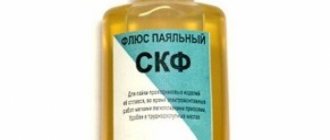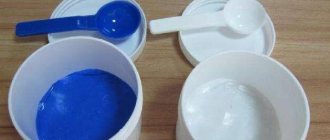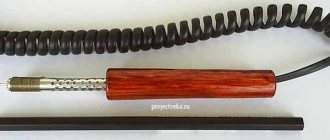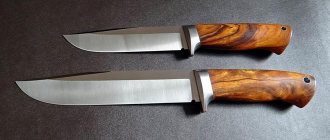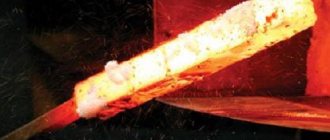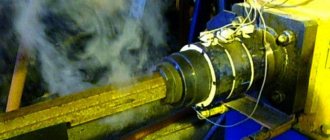Physico-chemical properties and composition
Resin is a solid; to make it liquid, a natural solvent must be added. Usually they take hydrolytic or medical alcohol. Propanol and some other elements are added to the mixture to impart special properties to the material. If the products are mixed correctly, the resulting mixture will look like a homogeneous mass.
The amount of rosin affects the density of the solution. According to its characteristics, the liquid product is the same as solid tallow rosin.
Main properties of the finished substance:
- excellent fluid fluidity;
- penetrates into all cracks and pores present in the metal;
- forms high adhesion between parts.
The substance is not harmful, does not act aggressively on metal surfaces, so it is suitable for any parts.
Due to its good fluidity, liquid rosin is convenient to work with
Making liquid rosin
Rosin is a natural material that is obtained from the resin of coniferous trees by evaporating turpentine. After processing, a solid translucent resin is obtained, which is used as a soldering flux. Rosin is used not only in its pure form, but also in combination with various chemical additives. Rosin is mainly used in amateur radio as a cheap and high-quality flux.
For soldering radio components and tinning printed circuit boards, it is very convenient to use an alcohol solution of rosin. Liquid rosin easily penetrates into all hard-to-reach places, both when soldering SMD components and conventional radio components, does not leave dirty marks on the board and, if necessary, is easily washed off with acetone or alcohol. Rosin easily dissolves the film of oxides formed on the surface of radio elements during the soldering process, and also reduces the surface tension of the solder melted by the soldering iron tip, allowing it to spread evenly over the entire surface of the soldering area.
In radio stores, the shelves are simply full of various expensive and cheap, chemical, acidic and natural fluxes based on pine rosin. There's a lot of choice, I don't want to take it. But as a real radio amateur, for the sake of experiment, I wanted to prepare an alcohol solution of rosin with my own hands. As my grandfather, an avid radio amateur, did.
Enough words, now I’ll start my experiment, I just can’t wait to see what happens in the end...
As always, I prepared very carefully for the experiment: I took two 20 grams. jars of pine rosin, 100 ml. pure 96° alcohol and an empty plastic bottle for preparing liquid rosin.
You definitely need to take new and clean rosin; dirty rosin, burnt by a soldering iron tip, will not work, because it will contain a lot of dirt and all sorts of impurities. Rosin can be dissolved in anything, in acetone, in all sorts of strange solvents, even kerosene. But the safest and non-toxic solvent for rosin, as you may have guessed, is 70° medical alcohol; you can also use 96°, it will dissolve even faster.
The rosin must be thoroughly crushed, I do this with such powerful pliers, right in the jar. The compression of the rosin crumbles into small pieces, which is very convenient; there is no need to do anything shamanic with glasses, mortars, crushers and other crap.
Now I pour it into a plastic bottle. There are exactly two jars of rosin here.
I fill this whole thing with alcohol, one to one. I have two jars, which is 40 grams of rosin, which means you need to pour in at least 40 milliliters of alcohol, maybe a little more. As they say, by eye. If all the rosin is not dissolved, I will add more. For such an interesting experiment, I donated a bottle of pure alcohol. What won't you do for the sake of science? Now I’ll mix this whole thing thoroughly. After about an hour, all the rosin should dissolve.
After an hour, the rosin had completely dissolved, resulting in a homogeneous, transparent honey-colored rosin-alcohol solution with a pleasant smell of pine rosin.
And now, as always the most interesting thing, I’ll see how liquid rosin will solder.
It turned out not bad, even better than store-bought flux (LTI-120, KE, FKEt, FKSp and so on), one might say it’s a little thicker.
Liquid rosin works, the experiment was a success! It solders perfectly and has such a pleasant light rosin smell.
RELATED ARTICLES ON THE TOPIC:
- Calculation of transmission on HF on-line Calculation of transmission on-line…
- Lightning strike It happened last summer in the western United States, in the mountainous desert state of Utah. I came to these places at the invitation of the head of a small company, a former radio amateur, to live a little and work for the benefit of the company. Soon, after setting up a temporary home, I began to pull off the amateur radio hardware and try to get out...
- Roofing filter in a modern transceiver Currently, the English term “Roofing-filter” is often used in descriptions of modern transceivers for amateur bands. But what does it mean?...
- Adding your data to the QRZ.com server Many radio amateurs have difficulty registering on the QRZ.com server. Let's try to briefly tell you how to register or correct your data on the QRZ.com server...
- Dicibels in Communications The unit of measurement “decibels” can be heard everywhere. However, not everyone who often uses it knows what is hidden behind it. We provide some information for information for beginners and refreshment of the memory of experienced amateurs. The decibel (dB) is named after the famous inventor of the telephone, Alexander Graham Bell. For practical reasons...
- Determination of wire diameter abroad. AWG and SWG When designing equipment based on foreign literature, radio amateurs have to deal with determining the diameter of the wire, because the latter in English-language literature is designated in the form of conventional numbers (caliber). There are two standards. AWG - American Wire Gauge - American standard, and SWG - Standard Wire Gauge - British standard. Defining...
- Call signs of amateur radio stations in Kazakhstan On an ongoing basis, only one call sign is issued for an amateur radio station for individual use in the Republic of Kazakhstan. UN series prefixes are issued to all amateur radio stations of the Republic of Kazakhstan, UO series prefixes - after selecting the UN series prefix resource, UP series prefixes - to special amateur radio stations, UQ series prefixes are...
- Telegraph key from paper clips To make a telegraph key you will need plastic or plywood, or any other insulating material suitable for the job. These can be pieces of plastic from old monitors, computers, printers, televisions, etc. with flat surfaces. We will need a couple of paper clips, screws and nuts. You can use…
What you need for cooking
Before you start working on creating liquid rosin for soldering, you need to prepare all the ingredients and tools. For melting you will need rosin, water to dilute the thick mixture and alcohol. The tools you will need are:
- a gas stove or a special burner; solid pieces and liquid will be heated on them until they dissolve;
- a spoon to stir and dose the substance;
- a cup or mortar where rosin is crushed until fine;
- wooden masher;
- a jar for storing the resulting crushed flux.
Soldering at home
Soldering is a special technique by which metal elements are firmly bonded to each other using molten solder. In everyday life, you can fasten parts together using an ordinary soldering iron.
Before you start soldering, you need to clean the surfaces of the parts that will adhere to each other using a file or sandpaper. Then they must be degreased using a solvent or cleaned using gasoline and lubricated with flux.
Flux is a substance with which oxide films, other contaminants and excess fat are removed from the surface of a metal. In addition, flux protects metals from possible oxidation. A special substance, rosin, is often used as such a flux.
Rosin flux is mainly used for soldering at home. When carrying out industrial soldering, resin is used in smaller quantities compared to fluxes made from other substances.
Due to the property of rosin to dissolve oxides of tin, as well as copper and lead when heated, this substance can be used in electrical work as a special natural flux - a component with antioxidant properties. Thanks to this characteristic feature, this substance is able to clean metal surfaces during soldering. With its help, spreading is also improved and the surface tension of the substance used as solder is practically leveled.
In order to ensure high technological efficiency of the process of using flux during soldering, several types of such components are produced, made on the basis of colophon resin (they can be solid, liquid and gel-like):
- Solid flux. This type of component for soldering and tinning parts has been used for quite a long time and is the most popular. It has both its obvious advantages and disadvantages. The latter include the fact that when using solid flux it is difficult to maintain accuracy when applying it to hard-to-reach soldering areas.
- Flux based on alcohol solution. This component is universal. It can be used when soldering both small and large parts. The main advantage of this method is the easy way to apply it with a brush.
- Gel-based rosin flux. The viscous consistency of the gel allows you to quickly apply the substance to the surface. Using the gel, it is easier to treat the most inaccessible areas of the surface of parts that will be soldered. This ensures the most accurate dosing of the flux substance. The gel does not dry out too quickly compared to alcohol fluxes and is more pliable than solid rosin flux.
Main advantages
Each material has certain advantages and disadvantages; rosin has proven itself in soldering operations for many years and is still used today. Main advantages of the material:
- Dielectric properties help avoid unnecessary contacts on the solder surface.
- Affordable price compared to analogues, available for free sale at any radio electronics outlets.
- The soldering process using the product can be carried out regardless of the environment, humidity level, or air temperature.
- The properties of the product are protected from exposure to moisture and have a long shelf life.
- Prevents the formation of rust deposits on metal structures and degreases the product.
Rosin for soldering
It is allowed to use a natural product without personal protective equipment, due to the lack of toxicity. The process of use is not difficult; you can independently make the necessary concentration and type for convenient work.
What is rosin
Flux in the solid state is a brittle amphora substance consisting of glassy pieces. What rosin is made from is produced by purifying the resins of coniferous plants by special chemical reactions. Rosin for soldering is used to resist oxidative processes that can destroy the connection during operation, an element that is resistant to loss of chemical properties when exposed to high temperatures.
The composition of rosin allows metals to be reliably joined by soldering.
The liquid state when heated promotes the spreading of the material over the elements in the desired shape. Before you find out what rosin is needed for, it is important to understand the chemical properties of the composition. The raw material from which the resin is made has dielectric properties, but this does not affect the ability of the connection to transmit electric current.
Standardized parameters of rosin according to GOST 19113-84
Download GOST 19113-84 “Pine rosin”
In the field of radio repair, rosin is the most affordable flux option. Some beginners who have no experience in soldering do not realize what rosin is and use it everywhere. It is possible to make a mistake with this approach, since the product does not apply to all types of connections. The product is mainly used at home, with infrequent work, since the flux has an unlimited shelf life due to its simple design.
Ointment with beeswax and rosin
Rosin is a light yellow, brittle and hard substance that consists of resinous substances obtained from coniferous trees after distilling off turpentine. Depending on what type of raw material it is obtained from, it comes in different types. Resin rosin is obtained after distilling turpentine from purified resin. Extraction - after extraction of resinous wood, most often pine, with gasoline. Talwood is prepared by the method of fractional distillation of tall oil.
Wax is a unique beekeeping product. It is produced in the body of worker bees and is secreted onto the surface of wax mirrors, where it hardens in the form of wax scales, which serve as material for honeycombs. At different times of the year the product has a different color. In spring it is white, and by autumn it turns yellow, sometimes dark brown.
Ointments for healing purulent wounds, trophic ulcers, burns and dermatitis with beeswax and rosin
To prepare the ointment, you need to take twenty-five grams of rosin, beeswax and vegetable oil. Place in a steam bath and heat until dissolved. Then add fifty grams of propolis. Bring the ointment to a boil, but do not boil. Apply the ointment to the wound twice a day and cover with a sterile bandage. Use until complete recovery.
Ointment for resorption of tumors with beeswax and rosin
Ointment for resorption of tumors with beeswax and rosin
The ointment is used externally for cysts on the ovaries and uterus, fibroids, fibroids and prostate adenoma. To prepare the ointment, you will need one hundred grams of pine rosin, which must be melted in a water bath and added twenty grams of wax. After the wax has dissolved, you need to pour in twenty milliliters of sunflower oil.
When the mixture acquires a homogeneous structure, you need to take a linen napkin, the dimensions of which are ten by fifteen centimeters. You need to apply a warm mixture to it and apply it to the lower abdomen. Shave your hair first. The napkin should remain on the body for three days, then it must be replaced with another one.
We recommend reading: Storing wax
The finished ointment should be placed in a jar. It hardens, so it needs to be steamed before each use. A total of eight napkins will be needed for the course of treatment. The solution prepared at a time is enough for four napkins.
Sources:
- https://progermetik.ru/articles/nuzhno-li-delat-maslo-dlya-propitki-dereva-svoimi-rukami.html
- https://howmakes.com/180/
- https://narodnymisredstvami.ru/kanifol-naruzhnoe-narodnoe-sredstvo/
Soldering methods
Having studied the properties and characteristics of Colophon resin and fluxes made on its basis, you can begin the soldering process. How does it happen?
The soldering process using rosin occurs in several ways.
First way.
- Heat the soldering iron to the required temperature.
- A small amount of low-melting substance used as solder is placed on the tip of the soldering iron. It could be tin, lead, copper, antimony, bismuth, zinc, cadmium.
- Dip the soldering iron tip along with the selected solder into the rosin to collect the resinous substance. It should be taken into account that when the soldering iron is fully heated, a slight smoke should appear.
- As quickly as possible - before the resin evaporates - the necessary parts are soldered.
The method described above requires speed, attention and high precision. To complete it, you need to have certain skills and abilities. Therefore, soldering can be done using rosin and another method .
- The most common ethyl alcohol is used as the basis for the flux.
- Rosin powder is added to the alcohol solution. The suspension is mixed well and left until the rosin is completely dissolved.
- An alcohol solution of colophon resin is applied with a brush to the parts that will be connected by soldering.
- The soldering iron is dipped into the solder and removed only when the soldering iron tip is completely covered with a shiny film.
- Grab a little more molten solder and quickly transfer it to the places of future soldering.
- Distribute the solder evenly over the entire surface - they deserve the place of future soldering.
- In the same way, the required mass of solder is transferred, which is required for strong adhesion at the junction points.
- After the joints have cooled, they are wiped with a damp soft cloth and allowed to dry.
- The resulting joint is processed using a file. You can use fine-grained sandpaper instead.
- Wipe the surface with a dry cloth.
Using these methods, parts are soldered using rosin.
